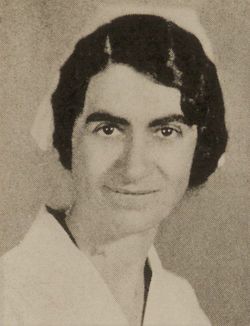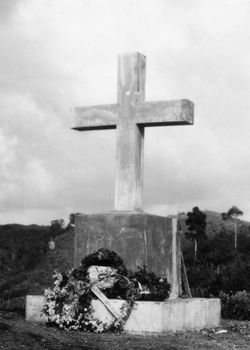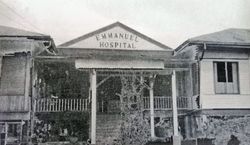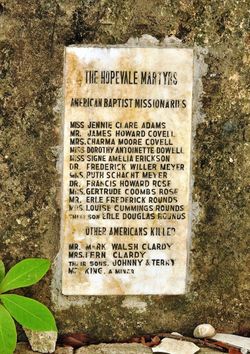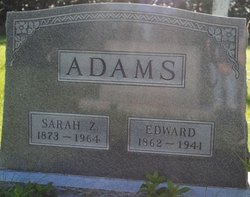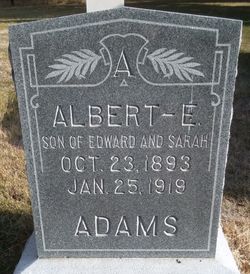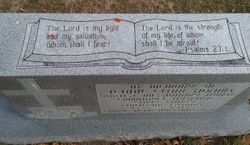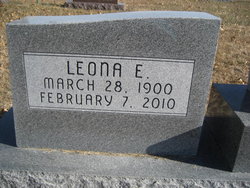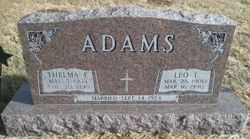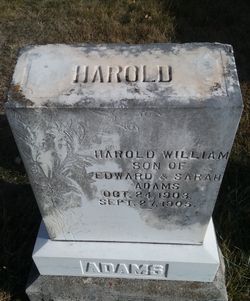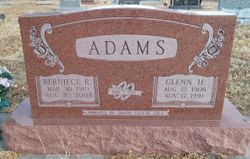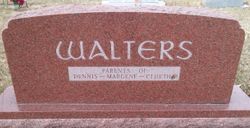| Description |
: |
Jennie C. Adams attended the Western Reserve University School of Nursing, Bailey Training School for Nurses and the Nebraska Wesleyan University for her nursing care education. She also trained at Green Gables Hospital at Lincoln, Nebraska, graduating in June, 1922. Then took some additional training at Cook County, Hospital in Chicago.
She volunteered for missionary work in the Philippines in 1922 under the Woman's American Baptist Foreign Mission Society. On 19 April 1923 she sailed for the Philippines to work at Emmanuel Hospital, Capiz, on Panay Island. As a missionary nurse she became the superintendent of the Capiz Emmanuel...
Read More
|
Jennie C. Adams attended the Western Reserve University School of Nursing, Bailey Training School for Nurses and the Nebraska Wesleyan University for her nursing care education. She also trained at Green Gables Hospital at Lincoln, Nebraska, graduating in June, 1922. Then took some additional training at Cook County, Hospital in Chicago.
She volunteered for missionary work in the Philippines in 1922 under the Woman's American Baptist Foreign Mission Society. On 19 April 1923 she sailed for the Philippines to work at Emmanuel Hospital, Capiz, on Panay Island. As a missionary nurse she became the superintendent of the Capiz Emmanuel Hospital from 1923 to 1943. She worked together with Dr. Frederick W. Meyer at the hospital. Jennie also became the head of the hospital's Training School for Nurses in 1923. In 1932, she helped organize a church in the village of Panitan.
War with Japan broke out in December 1941. When Japanese forces invaded Panay in April 1942 Jennie along with a number of other missionary colleagues chose not to surrender. Aided by Filipino friends, they evacuated to Katipunan, Tapaz, Capiz Province and then to a mountain hideout located in a narrow ravine deep within the forest in a place they called Hopevale. Despite the war, the missionaries found peace and calm assurance because of their faith. Dr. Meyer described their life in Hopevale: "The forest is a wonderful residence, monkeys, gaily colored birds all around us; sympathetic mountaineers, loving barrio folks, make our lives happier… We are very poor in earthly possessions, but God inspires our neighbors to be of great help, so there has been plenty of food." "Hopevale, though beautiful, was anything but idyllic. It was not a sequestered place for a focused sabbatical but a fragile refuge from war and capture." For twenty long months they lived there and continued serving the Lord. They built an open-air chapel, (a cathedral in the glen), and held regular worship services attended by some 75-100 people from the surrounding areas.
Mr. and Mrs. Covall had written: "We live in a grass hut with a bamboo floor. The people around supply us with plenty to eat… The Japanese came very close one day in February, and we have moved out thrice to hide…"
On the morning of Sunday, 19 December 1942, their location was discovered by Japanese troops. A couple of families were able to escape. She along with the 16 other Americans were held prisoners Sunday and Monday. On Tuesday, 21 December 1943, Jennie (age 47 years) along with most of the other Americans, missionaries and some miners (men, women and children), were executed (beheaded). Two of the men were killed on Wednesday, 22 December 1944. The bodies were dragged into a couple of the houses, which were then set on fire. In addition "ten to fifteen Filipinos including women and children, living nearby, were killed". "There were other bodies scattered about the surrounding country, none recognizable." Pillaged and burned, the Japanese left Hopevale later that day.
Interestingly enough, Toshimi Kumai, whose platoon was sent after the *escaped Americans before the 17 were executed, had this to say when they returned to Hopevale. "We managed to return to the field headquarters at midnight and slept like the dead under the hut. Next morning, when the company was getting ready, there were no Americans in sight. I asked an NCO attached to the unit headquarters, and he told me, 'Captain Watanabe executed them all.' I had thought that all the captured Americans would naturally be sent to the internment camp in Manila, so I felt furious about the cruel approach of Captain Watanabe. On hearing the story, my subordinates were all compassionate and outraged: 'How could he kill the family of three since they were obviously civilians?' Source: The Blood and Mud of the Philippines: the worst Anti-Guerrilla Warfare in the Pacific", written by Mr. Toshimi Kumai, Chapter 6.1.
*"the Americans, had already disappeared"
In the middle of January 1944 Pastors Engracio C. Alora and Delfin Dianala and another Filipino went to Hopevale to recover the remains. They also found a number of documents not burned in the fire. They secretly buried the remains in the dirt floor of Pastor Dianala's Katipunan Evangelical Church. After the war the remains of Jennie Clare Adams was interred on a hill near "Hopevale" in a crypt which she shares with the 16 others beneath the cross in Barrio Katipunan, Municipality of Tapaz, Capiz Province, Panay Island, Philippines.
She also has a cenotaph in the Chambers Cemetery, Chambers, Holt County, Nebraska next to her parents.
Jennie was fond of writing in her diary. She was also very poetic. She wrote many poems while they were on the run. After her death, the Woman's American Baptist Foreign Mission Society published a booklet (48 pages) of her poems entitled "The Hills Did Not Imprison Her" by Jennie Clare Adams (1947).
In this one it seems Jennie foresaw her own martyrdom at Hopevale.
"Let me live bravely;
For life has many battlefields, Where valor must be shown,
Many darkened corners, Where pain and fear are known,
Life calls for sacrifice, To share the highest good,
To serve courageously, Sometimes to give life's blood.
As others lived and gave, Let me be brave.
Let me serve faithfully;
Content with work to do, Whatsoever life may bring,
I'm serving others well, Thus do I serve my King.
May I not weary grow, When tasks seem burdensome,
Nor turn aside distraught, Before life's work is done.
As others served, proved true, Let me be faithful too.
Let me die heroically;
Steadfast in faith and calm, When that great day is near
Knowing no hour of dread, Feeling no anxious fear,
For death is but a door, Closed tight on pain and strife,
A door that opens up That we may enter Life.
As heroes die, Still brave and true, Let me die, too." |

